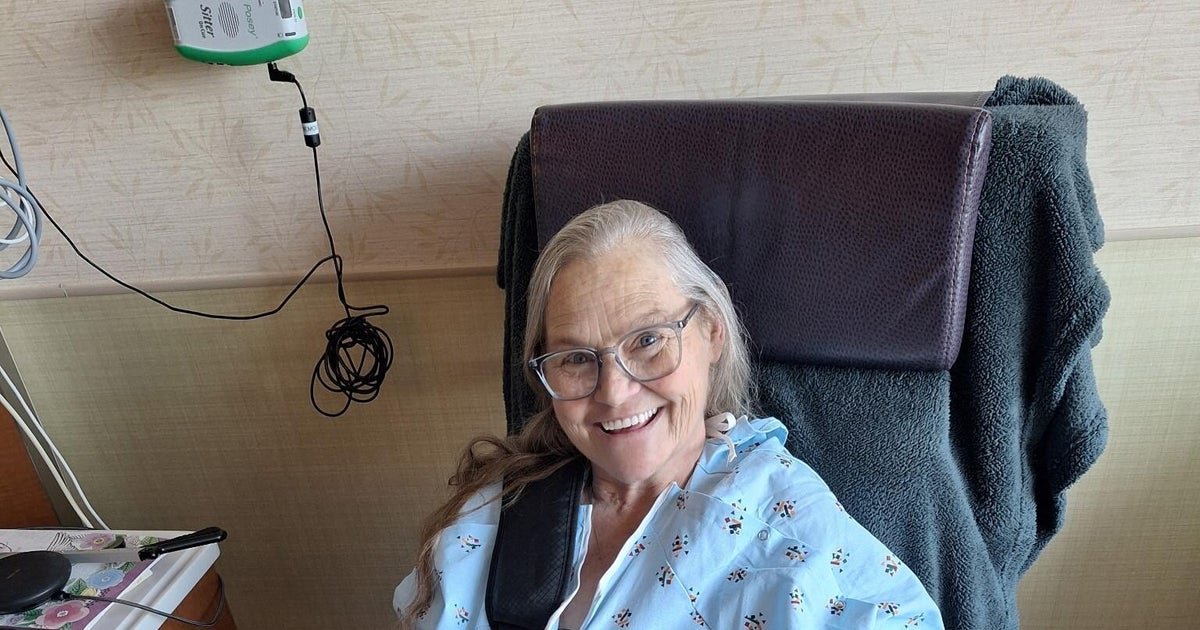Sue Baker was used to spending time in the hospital. She had started having heart troubles in 2015, and as the issue escalated, she spent more and more time in the hospital. She had a pacemaker implanted to keep her heart beating. Once, she spent five days in a coma.
In 2019, as her heart function continued to fail, Baker received a left ventricular assist device, or LVAD, a mechanical pump that helps the heart’s left ventricle circulate blood throughout the body.
For years, Baker lived on “batteries and electricity,” but she didn’t stop living her life. She married a man she loved, and they started building a life together in southeast Georgia. However, she knew the LVAD was only a stopgap measure, and wanted to make sure she was living a full life before her health declined further.
Four years after getting the LVAD, Baker started having dangerous heart rhythms. She was admitted to the Mayo Clinic in Jacksonville, Florida, and was added to the transplant list to await a new heart.
For months, the 58-year-old waited, often receiving painful shocks from her LVAD and pacemaker as they tried to keep her heart functioning. Her body was also producing too many antibodies, which put her at high risk for rejecting any organs she received. Her transplant cardiologist, Dr. Pareg Patel, tested multiple medications, including chemotherapies, to reduce the antibodies. The process was “very scary,” she said.
One day, Patel came to her with another option: She could have a liver transplant, in addition to the new heart. It might solve the antibody problem. There was just one catch: A heart-liver transplant had never been done in someone with an LVAD before. Her other option was palliative care.
“We got to talking about it, and I was like ‘You’re not going to know unless somebody agrees to do this. There’s not much choice, really,'” Baker recalled. “It was going to be an experiment one way or the other.”
Sue Baker
A first-of-its-kind transplant
The liver is “like sponges that take down these antibodies,” Patel explained. Sometimes, livers are transplanted alongside hearts to lower the risk of rejection. But the procedure means a patient needs to wait until a heart and liver are available from the same donor. Some people die on the waiting list, Patel said. But for Baker, it was the best option.
“It’s a story where we were able to find an out-of-the-box solution for somebody who I can guarantee you two years ago we would have said no to and put them in hospice,” Patel said. “She had less than probably six months to live in, more likely three months.”
Baker spent months in the hospital, continuing to receive painful shocks from her LVAD and pacemaker. She had other complications, including diagnoses of COVID-19 and pneumonia. In September 2024, she finally received word that a heart and liver were available to her.
Sue Baker
“I was shocked,” Baker said. “I was so excited.”
Patel said he and his team anticipated that the surgery would be “challenging” and “very high risk” because of Baker’s health complications but everyone believed it was the best possible option. Baker would also be donating her “perfectly healthy” liver to another patient, Patel said, in what’s known as a domino operation.
“I think the cool part of this is for Sue, is that by using this technology, number one, we were able to prove that by placing a liver and a heart from somebody is we’re able to make antibodies go close to zero,” Patel explained. “And number two, we were able to have Sue become not only a recipient of two organs, but also a donor in the same day.”
Blazing a path for other patients
After her surgery, Baker said she had a long recovery, but spent her time in the hospital bonding with other patients. She tried to be a voice of optimism for other people waiting for transplants, she said. She also received a letter from the person who received her liver.
After Baker recovered and left the hospital in October 2024, she was eager to resume her life in Georgia, but tragedy struck: Her husband died from a sudden cardiac arrest just weeks later. Burdened by medical bills and funeral expenses, her financial situation spiraled. She said her housing is now unstable, and most spare money goes to flying to regular check-ups at the Mayo Clinic. A GoFundMe has only raised a few hundred dollars. Patel said Baker will need frequent check-ups and medication to maintain her new organs.
Mayo Clinic said it offers financial assistance and payment plan options, as well as financial counseling to patients who are uninsured or underinsured.
Mayo Clinic
Baker said she is leaning on her church for emotional support and other aid. She has a caretaker, Charlene, who helps with day-to-day life. She also hopes that her taking part in the first-of-its-kind surgery will allow more people to receive lifesaving treatment, and said the thought brings her some solace.
Patel said that another surgery like Baker’s was already conducted, and that another is in the works.
“If it weren’t for her, these other two patients would have no opportunity,” Patel said.
“Doing what I did, it opened it up for so many more patients,” Baker said. “It made me very happy to know that more LVAD patients will be able to go through this and actually have a long chance at life.”
#heart #started #fail #firstofitskind #surgery #saved #life





